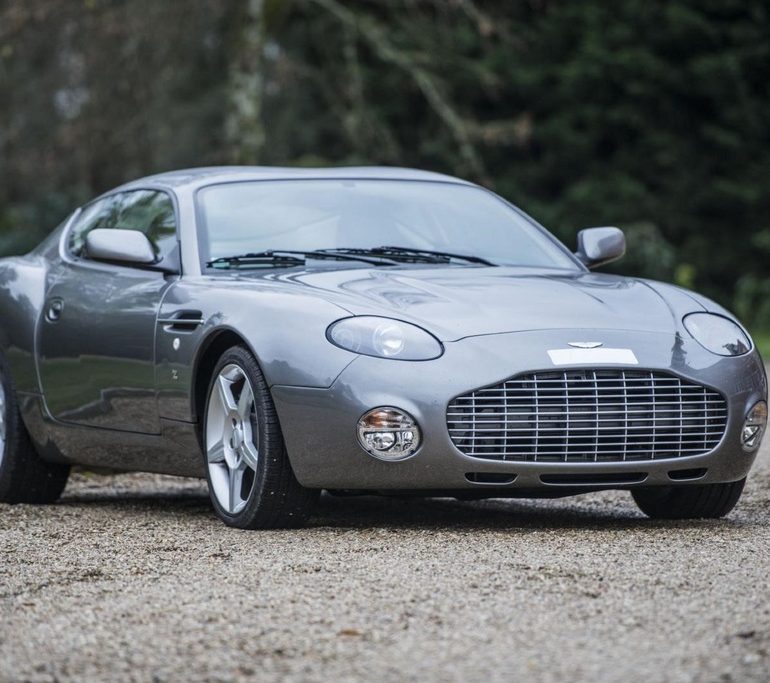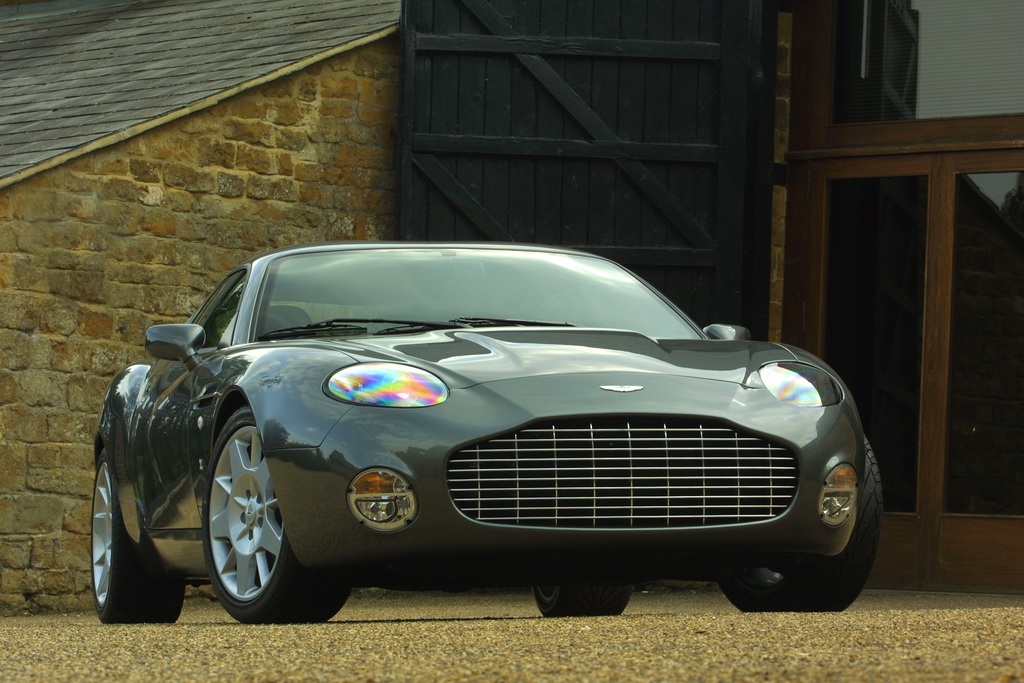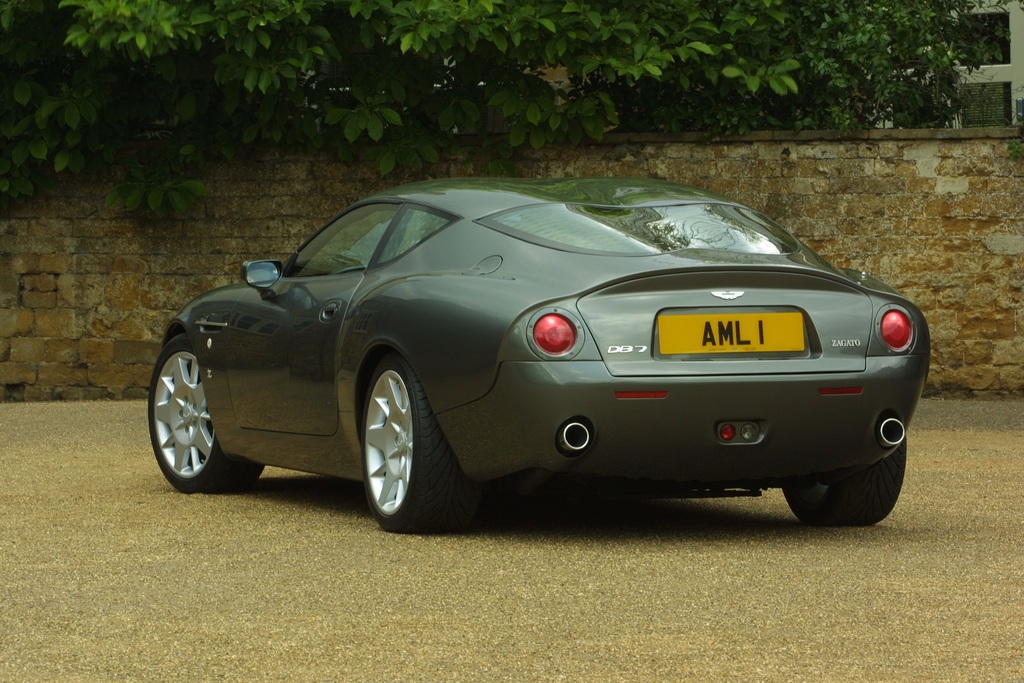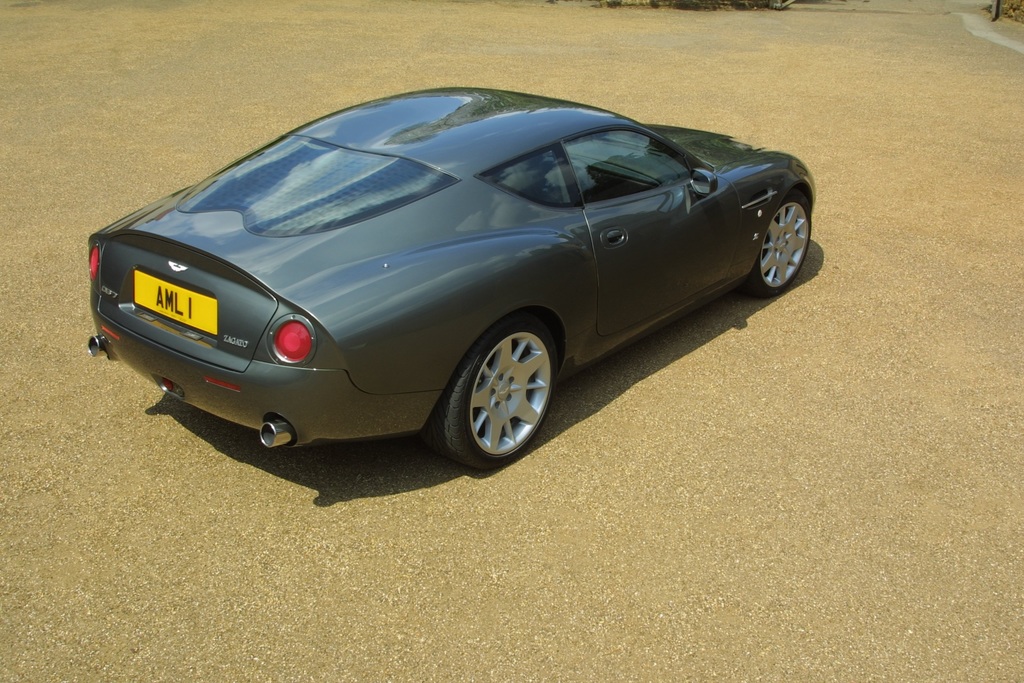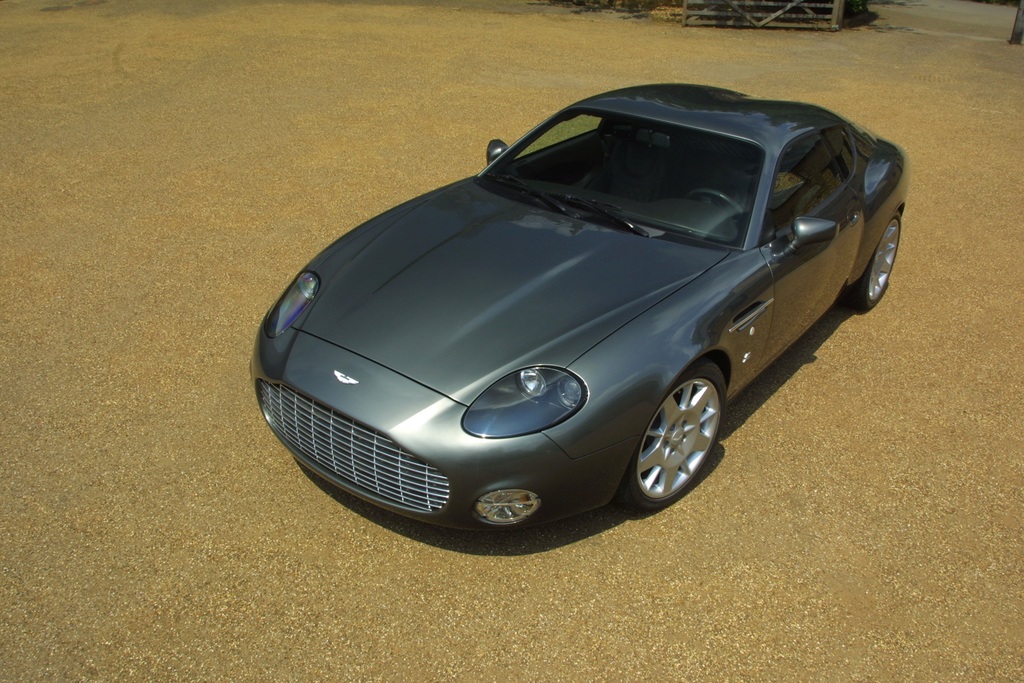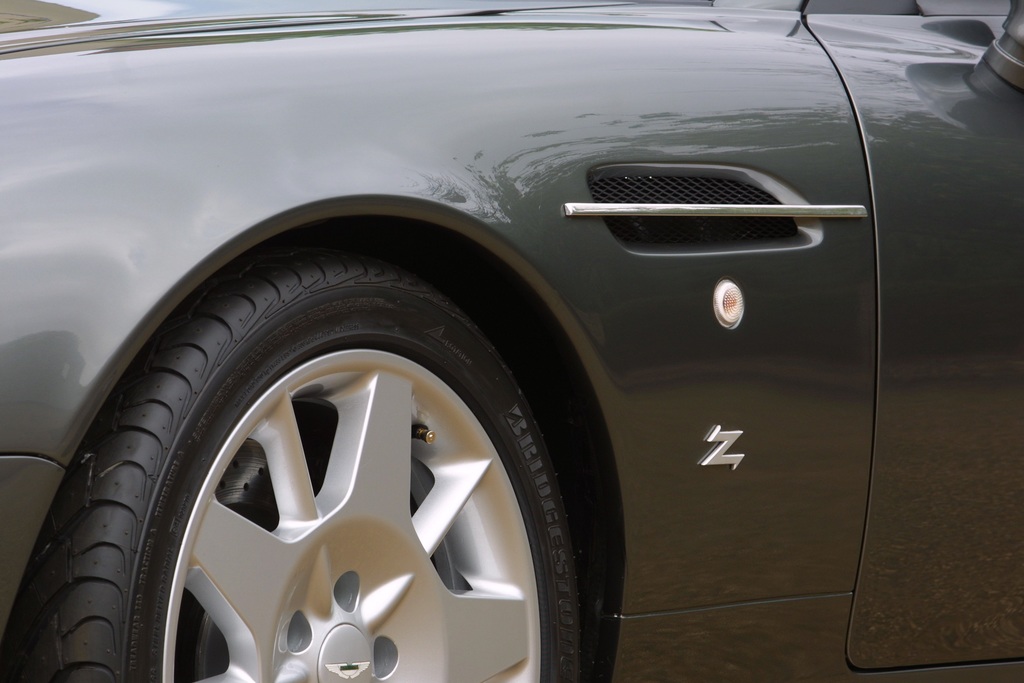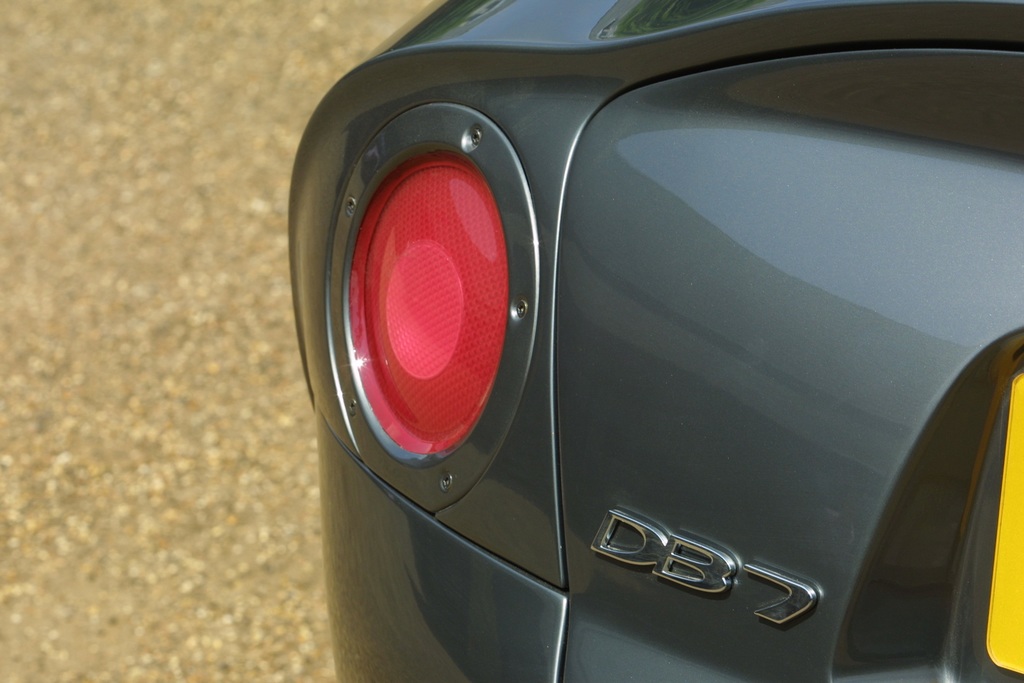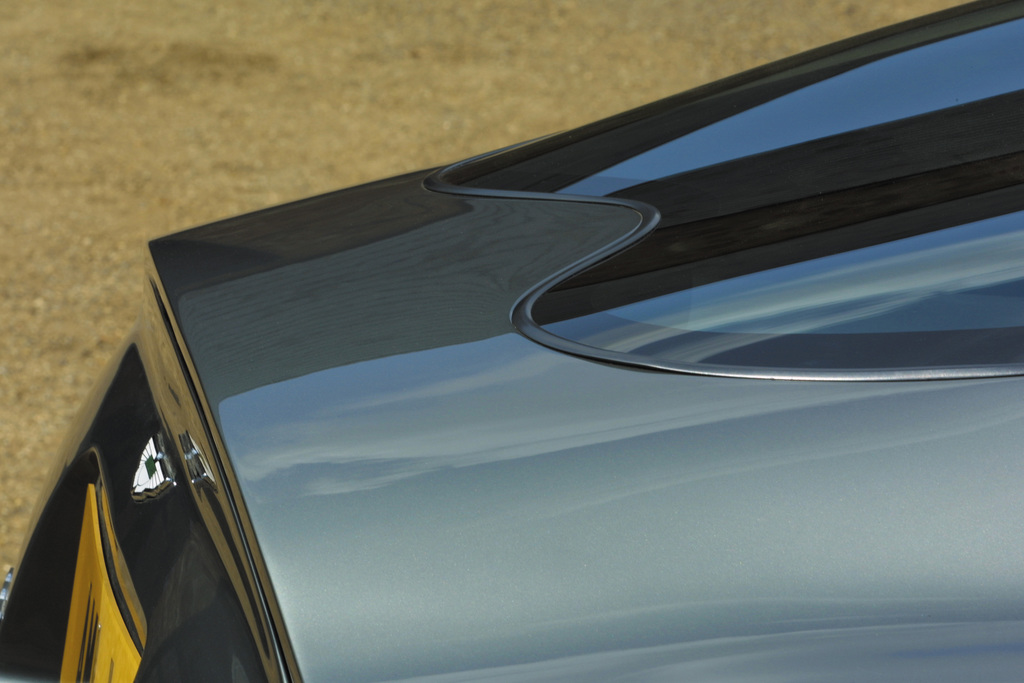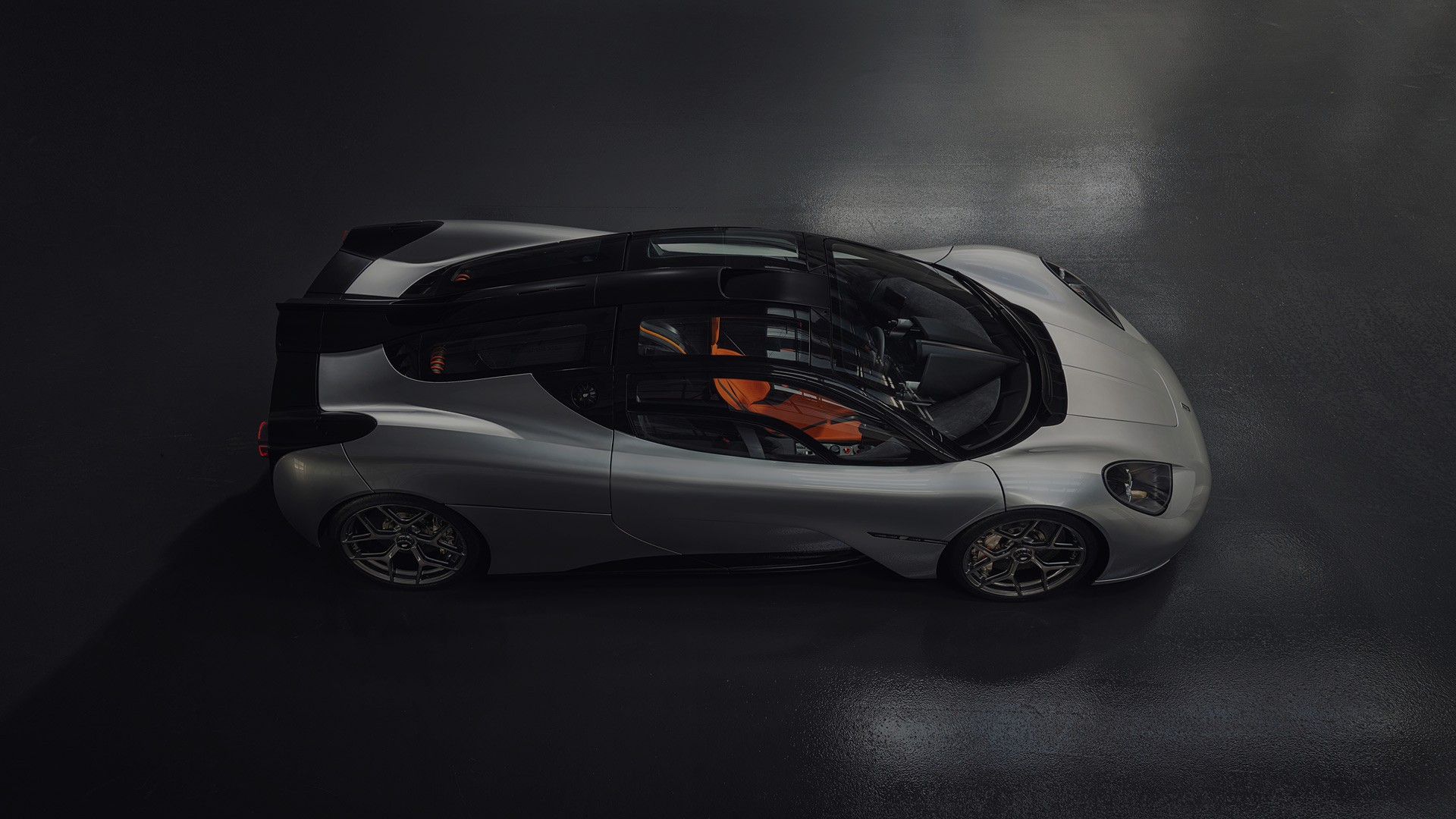The Aston Martin DB7 Vantage Zagato stands as one of the most distinctive and collectible modern Aston Martins, a car that fused the proven V12 platform of the DB7 with bespoke Italian coachwork. Announced in 2002, the coupe revived one of the marque’s most storied partnerships and marked the swan song of the DB7 generation. Only 99 examples were built, all of them instantly spoken for, ensuring its place as one of the rarest production Aston Martins of the modern era.
Background
By the late 1990s Aston Martin was enjoying renewed stability. The DB7, launched in 1994, had already become the brand’s best-selling model to date. In 1999, the arrival of the DB7 Vantage with its 5.9-liter V12 added a new level of performance and prestige. Yet by the early 2000s, company leadership under CEO Dr. Ulrich Bez was determined to celebrate the DB7’s success with something exceptional.
In the product pipeline was the DB7 GT, a higher-performance version of the Vantage tuned for enthusiastic drivers. Alongside it, however, Aston began work on a limited-run, coachbuilt model. The idea was to blend the mechanical upgrades of the DB7 GT with unique bodywork crafted by Zagato of Milan, reviving a partnership first made famous in the 1960s with the DB4 GT Zagato.
The program began with discussions between Ulrich Bez and Andrea Zagato at the Pebble Beach Concours d’Elegance in August 2001. Within a year, prototypes were shown to selected clients. A VIP preview took place in August 2002 at the famed Gieves & Hawkes tailor shop on Savile Row in London. Demand quickly outstripped supply: although between 200 and 300 potential buyers expressed interest, Aston Martin held firm to its plan to build just 99 examples.
The DB7 Vantage Zagato made its public debut at the Paris Motor Show in September 2002. With its compact proportions, muscular stance, and unmistakable Zagato detailing, it was immediately clear this was no ordinary DB7.
Bodywork
The most dramatic differences between the DB7 GT and Zagato’s interpretation were in the bodywork. Only the front light units were carried over.
The DB7 Zagato featured a shortened nose dominated by a large oval grille with a traditional egg-crate insert left in a natural aluminum finish. Three additional intakes were set into the lower fascia. The bonnet, front fenders, doors, and roof were all new, with the latter incorporating Zagato’s trademark double-bubble contouring.
At the rear, Aston Martin DNA was less apparent. Zagato redesigned the tail with heavily sculpted fenders, a complex curved rear screen, a truncated tail fascia with new lamps, a drop-down trunk lid, and shrouded exhaust outlets.
The car’s structure was a hybrid of materials: steel was used for the roof and rear fenders, aluminum for the hood, doors, and front fenders, and composite material for the aprons and sills. The result was a body 211 mm shorter than the DB7 GT, 31 mm wider, and approximately 60 kg lighter.
These proportions, coupled with the shorter wheelbase, gave the DB7 Zagato a compact, purposeful presence that set it apart from the flowing elegance of the standard DB7.
Interior
While the DB7 Zagato shared much of its cabin architecture with the standard DB7 Vantage, it received several bespoke touches. The two-seat layout replaced the standard 2+2 arrangement with a luggage shelf trimmed in quilted leather and carpet.
Seats were upholstered in Bridge of Weir aniline leather with quilted centers, paired with a quilted alcantara headliner. Special parchment-colored dials with black typeface replaced the usual black-on-white instrumentation. A leather-trimmed GT-style gear knob was fitted, and unique sill plates bore the Aston Martin wings, a DB7 Zagato script, and the individual build number of each car.
Standard equipment was generous and included electric seats, power windows and mirrors, air conditioning, driver and passenger airbags, an alarm system, Wilton carpets, and a premium audio system with a six-disc CD changer and satellite navigation.
Options allowed for further personalization. Buyers could specify alcantara seat inserts, lambswool rugs, alternative dashboard veneers ranging from oak to carbon fiber, custom audio systems, and brake calipers painted in red, gold, graphite, or black. As with all Zagatos, individuality was encouraged.
Chassis
The DB7 Vantage Zagato was built on a shortened version of the steel semi-monocoque chassis used by the DB7 Vantage Volante. The wheelbase was reduced by 60 mm to increase agility, while the chassis incorporated the suspension and braking upgrades developed for the DB7 GT.
The suspension consisted of double wishbones with coil springs, monotube dampers, and anti-roll bars at both ends. Aston Martin further stiffened the setup by 20 percent compared to the standard DB7 Vantage. Changes included revised front top mounts, a strengthened front subframe, repositioned lower wishbones, and lowered bump stops to increase suspension travel. At the rear, an additional lower brace reduced toe-out under braking, improving stability.
Braking was by Brembo, with ventilated discs measuring 355 mm at the front and 330 mm at the rear. Unlike the GT’s cross-drilled setup, the Zagato’s discs were grooved, with distinctive silver-finished Aston Martin-branded four-piston calipers. Pad specification was upgraded to Pagid RS 4-2-1 for improved bite. A servo from the V12 Vanquish was used to boost stopping power, while brake cooling was also enhanced.
Unique 18-inch lightweight five-spoke alloy wheels were fitted, wrapped in Pirelli P Zero Rosso tires sized 225/40 ZR18 front and 275/35 ZR18 rear. Fuel capacity was 89 liters, carried over from the DB7 Vantage.
Engine and Transmission
At the heart of the DB7 Zagato was the AM702 V12, a Cosworth-built, all-aluminum 60-degree unit with dual overhead camshafts, four valves per cylinder, and wet-sump lubrication. Displacement was 5,935 cc with bore and stroke of 89 mm by 79.5 mm. Compression was set at 10.3:1, and the engine used a Visteon electronic management system with multi-point fuel injection and Coil-on-Plug ignition.
Output was raised from the DB7 Vantage’s 420 bhp to 435 bhp at 6,000 rpm, with torque climbing from 400 to 410 lb-ft at 5,000 rpm. This was achieved through revised mapping and a freer-flowing exhaust system with a Vanquish-style bypass valve that reduced back pressure and delivered a richer exhaust note at higher revs.
Transmission was via an uprated Tremec T56 six-speed manual gearbox with a short-shift lever delivering 16 percent shorter throws. A twin-plate AP Racing clutch replaced the single-plate unit, reducing pedal effort by 22 percent and improving durability. A Powerlock limited-slip differential and switchable traction control system were standard. Final drive ratio was shortened from 3.77:1 to 4.09:1, sharpening acceleration.
Performance
With its lighter weight and revised gearing, the DB7 Zagato was marginally faster than the GT. Top speed increased to around 190 mph, while 0–62 mph was covered in 4.6 seconds. Kerb weight was 1,740 kg, about 60 kg lighter than the DB7 GT.
These figures made it one of the fastest road-going Aston Martins of its day, combining dramatic performance with exclusivity.
Production
Production of the DB7 Zagato began in mid-2003 and concluded in early 2004. A total of 99 customer cars were built, in addition to one production-spec prototype (numbered chassis 100) and the original 2002 show prototype.
Of the 99 customer cars, 59 were right-hand drive and 40 were left-hand drive. All but one were delivered with manual transmission. The exception was chassis 016, a right-hand-drive car fitted with the five-speed ZF Touchtronic automatic. To cope with the gearbox’s torque limitations, it is believed this car used the standard 420 bhp V12 from the DB7 Vantage.
All cars were sold before production commenced, with deliveries going to Europe, Asia, and the Middle East. None were homologated for the United States, as Aston Martin opted not to fund the crash testing required for the shortened chassis.
To satisfy American customers, Aston and Zagato built a related model, the DB AR1 (American Roadster 1), unveiled at the Los Angeles Motor Show in January 2003. This roofless Volante-based roadster was also limited to 99 cars.
Legacy
The DB7 Vantage Zagato occupies a special place in Aston Martin history. It was the first modern Zagato collaboration since the 1980s V8 Vantage Zagato and a direct homage to the DB4 GT Zagato of the 1960s. It also marked the end of the DB7 era, which would soon give way to the Gaydon-built DB9 and V8 Vantage.
Today, the DB7 Zagato is recognized as one of the most collectible modern Aston Martins. Its rarity, design pedigree, and blend of British engineering with Italian craftsmanship have ensured its desirability. With values consistently strong, it remains a centerpiece in collections and a reminder of the enduring creative spark between Aston Martin and Zagato.
Aston Martin DB7 Vantage Zagato Specifications and Performance
| Specification | Detail |
|---|---|
| Engine | 5,935 cc V12, DOHC, 48 valves |
| Power | 435 bhp @ 6,000 rpm |
| Torque | 410 lb-ft @ 5,000 rpm |
| Transmission | 6-speed manual, rear-wheel drive (1 Touchtronic built) |
| 0–62 mph | 4.6 seconds |
| Top Speed | 190 mph |
| Chassis | Steel semi-monocoque with aluminum and composite body panels |
| Suspension (Front) | Double wishbones, coil springs, monotube dampers, anti-roll bar |
| Suspension (Rear) | Multi-link, coil springs, monotube dampers, anti-roll bar |
| Brakes | Brembo ventilated discs, 355 mm front / 330 mm rear, 4-piston calipers |
| Wheels/Tires | 18-inch Zagato-specific alloys, 225/40 ZR18 front, 275/35 ZR18 rear |
| Dimensions | Wheelbase: 2,531 mm; Length: 4,481 mm; Width: 1,861 mm; Height: 1,244 mm |
| Kerb Weight | 1,740 kg |
| Seating | 2 |
| Fuel Capacity | 89 liters |
| Production | 99 units (2003–2004), plus 2 prototypes |


